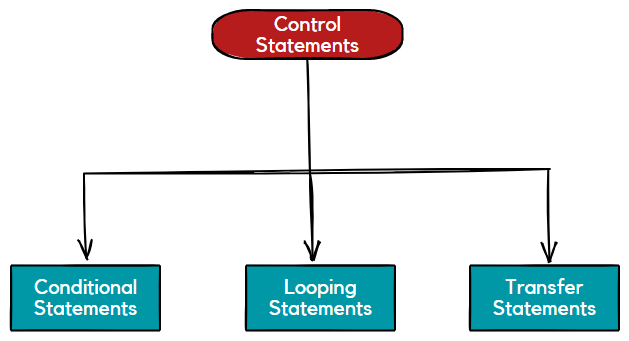Control Statements in Java: When we run our program, the execution usually starts at the top and goes down, and the execution also happens statement by statement. It’s like reading a book from the beginning to the end.
This is the normal way programs work. But in Java, you can also use special commands called “control flow statements” to change the execution order. It’s like having bookmarks in a book that allow you to jump to different chapters or pages.
These control flow statements help you control how your Java program runs, making it more flexible and useful. The control statement is an important part of Java’s work.
What Are Control Statements In Java?
Control statements in Java are a set of instructions or commands that help you control the flow of your program. They allow you to make decisions, create loops for repetitive tasks, and determine the order in which statements are executed.
Control statements are essential for writing flexible and dynamic & simple Java programs. There are three main types of control statements in Java:

Conditional Statements
These statements allow you to execute different code blocks based on certain conditions. The main conditional statements in Java are:
- if: It executes a code block if a condition is true.
- else: It provides an alternative block of code to execute if the condition in the if statement is false.
- else if: It allows you to check multiple conditions in sequence.
- switch: It is used for multiple branching based on a variable’s value.
Looping Statements
These statements allow you to repeat a block of code multiple times. The main looping statements in Java are:
- for: It creates a loop that runs a specific number of times.
- while: This loop runs as long as a specified condition is true.
- do-while: It is similar to the while loop but guarantees that the code block will be executed at least once.
Transfer Statements
These statements control the flow of execution within loops and methods.
- break: It is used prematurely to exit a loop or switch statement.
- continue: It skips the current loop iteration and moves to the next one.
- return: In methods, it is used to send a value back and exit the method.
In this guide, we will explore these control statement types in detail. We’ll provide comprehensive explanations, code examples, and best practices for using them effectively in your Java programs.
Control Statements Points:
- Control statements in Java help manage the flow of execution in programs.
- Java programs execute statements sequentially from top to bottom, known as sequential statements.
- The three main control flow types are sequential, conditional, and repetition.
- Conditional control flow statements allow decision-making based on conditions, such as if-else statements, loops, and switch statements.
- Unconditional statements, like a break, continue, and return, change the execution flow without conditions.
- Best practices for control statements include keeping them simple, avoiding deep nesting, using meaningful variable names, thorough testing, and adding comments for clarity.
- The tutorial covers important aspects of Java’s control statements, and further tutorials delve into specific control flow statements like the if statement.
Conclusion:
Control statements are the backbone of program flow in Java. Understanding their types and when to use them is crucial for writing efficient, readable, and maintainable code.
We invite you to comment if you have any doubts regarding control statements in Java or would like to share suggestions for improving this article. Your feedback is essential in enhancing our understanding of this vital aspect of Java programming.
